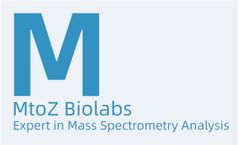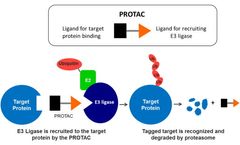Protein Ubiquitination Articles & Analysis: Older
23 articles found
Proteolytic targeting chimera (PROTAC) is a new type of drug design technology that works by inducing the degradation of target proteins. Unlike conventional small molecules that typically inhibit protein function, PROTACs facilitate the ubiquitination and subsequent degradation of specific proteins. This bifunctional molecule ...
This article mainly introduces the basic principles and steps of ubiquitination detection immunoprecipitation and how to interpret the results.The principle of ubiquitination detection immunoprecipitation is to use highly specific antibodies to precipitate the target protein and its binding proteins. ...
This article mainly introduces how to detect the ubiquitination level of a protein.ImmunoblottingImmunoblotting is a common method for detecting the level of protein ubiquitination, mainly through the detection of ubiquitinated proteins in protein samples using specific antibodies. ...
Commonly Used Ubiquitinated Protein Enrichment Methods1. Ubiquitin Antibody EnrichmentThis is one of the most common methods for enriching ubiquitinated proteins. ...
Protein Ubiquitination is a crucial cellular biological process. It involves the binding of Ubiquitin protein to the target protein, thereby regulating the degradation, positioning, activation, etc., of the target protein. ...
Western blot can accurately detect the presence and expression of specific proteins in samples, and it can also be used to detect protein post-translational modifications, such as phosphorylation, ubiquitination, etc. ...
UbiquitinationInvolves covalent binding of ubiquitin to the target protein, usually leading to protein degradation by the 26S proteasome.3. ...
The identification of Tau protein ubiquitination mainly aims to determine whether Tau protein is ubiquitinated and the sites of ubiquitination.Analysis Workflow1. ...
Co-immunoprecipitation (Co-IP) is an experimental technique used to detect the interaction between a protein and other proteins. When it comes to detecting protein ubiquitination, Co-IP can be used to determine whether the target protein is ubiquitinated, and its interaction with ...
In post-translational modification (PTM) of proteins, ubiquitination is considered one of the most critical processes in regulating cellular functions and various diseases. ...
Ubiquitination detection of proteins is a biochemical technique used to identify and analyze ubiquitination modifications on proteins. Ubiquitination is a post-translational modification process that involves the covalent linkage of the small protein ubiquitin to lysine residues ...
The ubiquitination site of a protein refers to those specific amino acid residues on the protein molecule that can covalently bind with Ubiquitin. ...
Acetylation, methylation, phosphorylation, and ubiquitination are the most understood, while glycosylation, glutamylation, butyrylation, sumoylation, and isomerization are relatively newly discovered and not yet thoroughly researched. ...
Post-translational modifications (PTMs) of histones are crucial for protein structure regulation, playing key roles in gene expression regulation, DNA repair, cell signaling, and more. ...
This platform was applied to various target proteins, including ERα, EGFR, MEK1/2, BRD2/4, CDK4/6, AR, BCR-ABL, and demonstrated significant protein degradation. ...
In cells, PROTAC molecules can recognize and selectively bind target proteins, recruit specific E3 ubiquitin ligases, and form a “target protein-PROTAC-E3 ubiquitin ligase” ternary complex. Afterwards, E3 ubiquitin ligase and E2 ubiquitin conjugating enzyme work together to ...
In this study, the research team constructed the PROTAC virus to reduce the replication ability of the virus by manipulating the degradation of viral proteins and attenuated the wild-type virus into a vaccine. The naturally occurring protein degradation machinery "ubiquitin-proteasome system" in host cells lays a key biological foundation for the ...
In the 1970s and 1980s, Israeli scientists Aaron Sichanova, Avram Hershko and American scientist Irwin Ross discovered ubiquitin-mediated protein degradation after years of research. They were awarded the Nobel Prize in 2004. Ubiquitin is a polypeptide consisting of 76 amino acids that can form strong covalent bonds with ...
Determining the genetic factors of diabetes can help improve the understanding of the etiology and pathogenesis of this disease, and can provide strong support for early prevention and symptomatic intervention. The ubiquitin-proteasome-dependent protein degradation process is the main pathway for regulating intracellular protein levels. This ...
Intracellular protein degradation pathways are mainly lysosomal pathways and ubiquitin-proteasome system (UPS). Among them, the ubiquitin-proteasome system is the main pathway of protein degradation in vivo, and 80% of proteins in vivo are degraded through this pathway. ...















